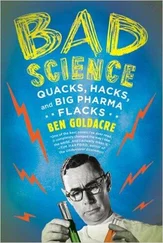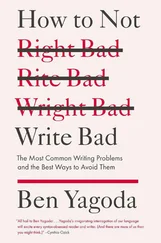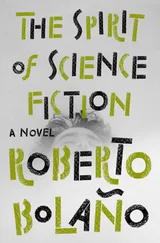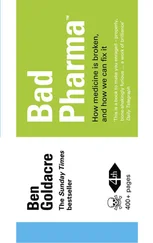Ben Goldacre - Bad Science
Здесь есть возможность читать онлайн «Ben Goldacre - Bad Science» — ознакомительный отрывок электронной книги совершенно бесплатно, а после прочтения отрывка купить полную версию. В некоторых случаях можно слушать аудио, скачать через торрент в формате fb2 и присутствует краткое содержание. Жанр: Публицистика, на английском языке. Описание произведения, (предисловие) а так же отзывы посетителей доступны на портале библиотеки ЛибКат.
- Название:Bad Science
- Автор:
- Жанр:
- Год:неизвестен
- ISBN:нет данных
- Рейтинг книги:5 / 5. Голосов: 1
-
Избранное:Добавить в избранное
- Отзывы:
-
Ваша оценка:
- 100
- 1
- 2
- 3
- 4
- 5
Bad Science: краткое содержание, описание и аннотация
Предлагаем к чтению аннотацию, описание, краткое содержание или предисловие (зависит от того, что написал сам автор книги «Bad Science»). Если вы не нашли необходимую информацию о книге — напишите в комментариях, мы постараемся отыскать её.
Bad Science — читать онлайн ознакомительный отрывок
Ниже представлен текст книги, разбитый по страницам. Система сохранения места последней прочитанной страницы, позволяет с удобством читать онлайн бесплатно книгу «Bad Science», без необходимости каждый раз заново искать на чём Вы остановились. Поставьте закладку, и сможете в любой момент перейти на страницу, на которой закончили чтение.
Интервал:
Закладка:
The second theme is perhaps more interesting: the proprietorialisation of common sense. You can take a perfectly sensible intervention, like a glass of water and an exercise break, but add nonsense, make it sound more technical, and make yourself sound clever. This will enhance the placebo effect, but you might also wonder whether the primary goal is something much more cynical and lucrative: to make common sense copyrightable, unique, patented, and owned .
We will see this time and again, on a grander scale, in the work of dubious healthcare practitioners, and specifically in the field of ‘nutritionism’, because scientific knowledge – and sensible dietary advice – is free and in the public domain. Anyone can use it, understand it, sell it, or simply give it away. Most people know what constitutes a healthy diet already. If you want to make money out of it, you have to make a space for yourself in the market: and to do this, you must overcomplicate it, attach your own dubious stamp.
Is there any harm in this process? Well, it’s certainly wasteful, and even in the decadent West, as we enter a probable recession, it does seem peculiar to give money away for basic diet advice, or exercise breaks at school. But there are other hidden dangers, which are far more corrosive. This process of professionalising the obvious fosters a sense of mystery around science, and health advice, which is unnecessary and destructive. More than anything, more than the unnecessary ownership of the obvious, it is disempowering. All too often this spurious privatisation of common sense is happening in areas where we could be taking control, doing it ourselves, feeling our own potency and our ability to make sensible decisions; instead we are fostering our dependence on expensive outside systems and people.
But what’s most frightening is the way that pseudoscience makes your head go soggy. Debunking Brain Gym, let me remind you, does not require high-end, specialist knowledge. We are talking about a programme which claims that ‘processed foods do not contain water’, possibly the single most rapidly falsifiable statement I’ve seen all week. What about soup? ‘All other liquids are processed in the body as food, and do not serve the body’s water needs.’
This is an organisation at the edges of reason, but it is operating in countless British schools. When I wrote about Brain Gym in my newspaper column in 2005, saying ‘exercise breaks good, pseudoscientific nonsense laughable’, while many teachers erupted with delight, many were outraged and ‘disgusted’ by what they decided was an attack on exercises which they experienced as helpful. One – an assistant head teacher, no less – demanded: ‘From what I can gather you have visited no classrooms, interviewed no teachers nor questioned any children, let alone had a conversation with any of a number of specialists in this field?’
Do I need to visit a classroom to find out if there is water in processed food? No. If I meet a ‘specialist’ who tells me that a child can massage both carotid arteries through the ribcage (without scissors), what will I say to them? If I meet a teacher who thinks that touching your fingers together will connect the electrical circuit of the body, where do we go from there?
I’d like to imagine that we live in a country where teachers might have the nous to spot this nonsense and stop it in its tracks. If I was a different kind of person I’d be angrily confronting the responsible government departments, and demanding to know what they were going to do about it, and reporting back to you with their mumbling and shamed defence. But I am not that kind of journalist, and Brain Gym is so obviously, transparently foolish that nothing they could say could possibly justify the claims made on its behalf. Just one thing gives me hope, and that is the steady trickle of emails I receive on the subject from children, ecstatic with delight at the stupidity of their teachers:
I’d like to submit to Bad Science my teacher who gave us a handout which says that ‘Water is best absorbed by the body when provided in frequent small amounts.’ What I want to know is this. If I drink too much in one go, will it leak out of my arsehole instead?
‘Anton’, 2006
Thank you Anton.
The Progenium XY Complex
I have great respect for the manufacturers of cosmetics. They are at the other end of the spectrum from the detox industry: this is a tightly regulated industry, with big money to be made from nonsense, and so we find large, well-organised teams from international biotech firms generating elegant, distracting, suggestive, but utterly defensible pseudoscience. After the childishness of Brain Gym, we can now raise our game.
Before we start, it’s important to understand how cosmetics – and specifically moisturising creams – actually work, because there should be no mystery here. Firstly, you want your expensive cream to hydrate your skin. They all do that, and Vaseline does the job very well: in fact, much of the important early cosmetics research was about preserving the moisturising properties of Vaseline, while avoiding its greasiness, and this technical mountain was scaled several decades ago. Hydrobase, at around £10 for a half-litre tub from your chemist, will do the job excellently.
If you really want to, you can replicate this by making your own moisturiser at home: you’re aiming for a mix of water and oil, but one that’s ‘emulsified’, which is to say, nicely mixed up. When I was involved in hippy street theatre – and I’m being entirely serious here – we made moisturiser from equal parts of olive oil, coconut oil, honey and rosewater (tap water is fine too). Beeswax is better than honey as an emulsifier, and you can modify the cream’s consistency for yourself: more beeswax will make it firmer, more oil will make it softer, and more water makes it sort of fluffier, but increases the risk of the ingredients separating out. Get all your ingredients lightly heated, but separately, stir the oil into the wax, beating all the time, and then stir in the water. Stick it in a jar, and keep for three months in the fridge.
The creams in your local pharmacy seem to go way beyond this. They are filled with magic ingredients: Regenium XY technology, Nutrileum complex, RoC Retinol Correxion, Vita-Niacin, Covabeads, ATP Stimuline and Tenseur Peptidique Végétal. Surely you could never replicate that in your kitchen, or with creams that cost as much by the gallon as these ones cost for a squirt of the tiny tube? What are these magic ingredients? And what do they do?
There are basically three groups of ingredients in moisturising cream. Firstly there are powerful chemicals, like alpha-hydroxy acids, high levels of vitamin C, or molecular variations on the theme of vitamin A. These have genuinely been shown to make your skin seem more youthful, but they are only effective at such high concentrations, or high acidity levels, that the creams cause irritation, stinging, burning and redness. They were the great white hope in the 1990s, but now they’ve all had to be massively watered down by law, unless on prescription. No free lunch, and no effects without side-effects, as usual.
Companies still name them on the label, wallowing in the glory of their efficacy at higher potencies, because you don’t have to give the doses of your ingredients, only their ranked order. But these chemicals are usually in your cream at talismanic concentrations, for show only. The claims made on the various bottles and tubes are from the halcyon days of effective and high-potency acidic creams, but that’s hard to tell, because they are usually based on privately funded and published studies, done by the industry, and rarely available in their complete published forms, as a proper academic paper should be, so that you can check the working. Of course, forgetting that technical stuff, most of the ‘evidence’ quoted in cream adverts is from subjective reports, where ‘seven out of ten people who received free pots of cream were very pleased with the results’.
Читать дальшеИнтервал:
Закладка:
Похожие книги на «Bad Science»
Представляем Вашему вниманию похожие книги на «Bad Science» списком для выбора. Мы отобрали схожую по названию и смыслу литературу в надежде предоставить читателям больше вариантов отыскать новые, интересные, ещё непрочитанные произведения.
Обсуждение, отзывы о книге «Bad Science» и просто собственные мнения читателей. Оставьте ваши комментарии, напишите, что Вы думаете о произведении, его смысле или главных героях. Укажите что конкретно понравилось, а что нет, и почему Вы так считаете.





![Роман Зыков - Роман с Data Science. Как монетизировать большие данные [litres]](/books/438007/roman-zykov-roman-s-data-science-kak-monetizirova-thumb.webp)






